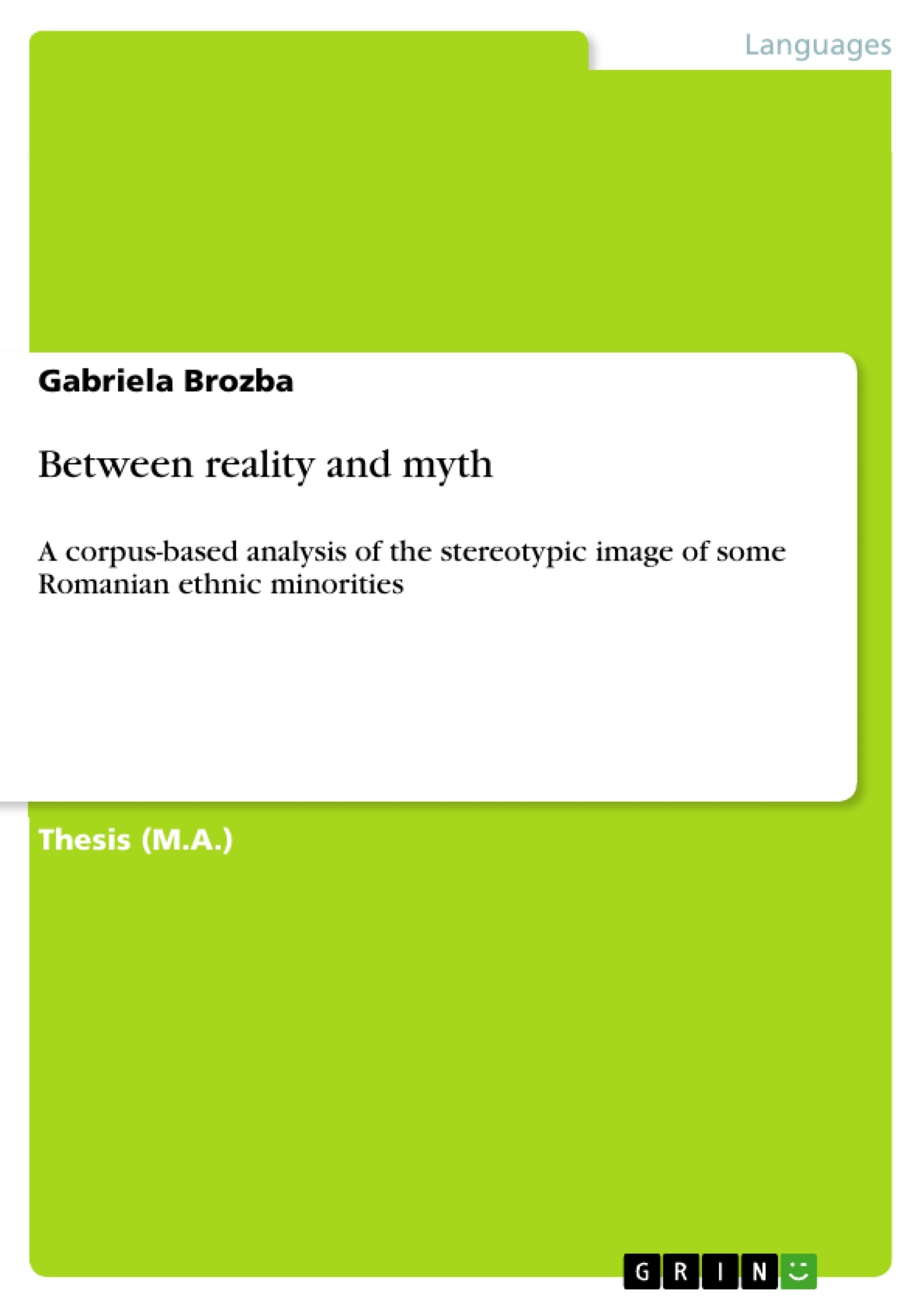The purpose of this paper is to highlight the relation which can be established between language and stereotyping as a socio-cognitive process. With this purpose in mind, what I will try to do is to analyze the linguistic material – consisting of a corpus made up of vocabulary for nicknames, forms of address, collocations, and expressions, on the one hand, and the proverbs on the other) so as to justify the way in which the stereotypical image of some of the groups (the Rroma, the Jews, the Turks, the Greeks, and the Hungarians), which represent or have represented ethnic minorities in Romania throughout the centuries, is delineated.
Inhaltsverzeichnis (Table of Contents)
- Introduction
- The Coordinates of Stereotype Thinking
- The Relation Between the Self and the Group
- Stereotype formation
- The social origin of stereotypes
- Ethnocentrism
- Phenomena involved in the mechanism of stereotype formation
- Illusory correlation
- Explaining illusory correlations
- Availability Heuristic
- Schema-driven processing
- Explaining illusory correlations
- Categorization
- Outgroup homogeneity
- Illusory correlation
- Stereotyping and Language
- The functions of language in intergroup contexts
- The Language of Stereotyping
- The foreigner
- The stereotype of Rroma
- The stereotype of the Jews
- The Stereotype of the Turks
- The stereotype of the Greeks
- The stereotype of the Hungarians
- Conclusions
Zielsetzung und Themenschwerpunkte (Objectives and Key Themes)
This paper aims to explore the connection between language and stereotyping as a socio-cognitive process. By analyzing a corpus of linguistic material, including vocabulary, nicknames, forms of address, collocations, expressions, and proverbs, the study aims to shed light on how the stereotypical image of certain ethnic groups (Rroma, Jews, Turks, Greeks, and Hungarians) is portrayed in the Romanian language.
- The role of language in perpetuating and shaping stereotypes
- The impact of social and historical factors on stereotype formation
- The linguistic mechanisms used to encode otherness and outgroup ethnicity
- The influence of cognitive biases and social categorization on stereotype development
- The specific examples of stereotypes associated with different ethnic groups in Romania
Zusammenfassung der Kapitel (Chapter Summaries)
- Introduction: This chapter provides an overview of the research goals and methodology. The study focuses on analyzing the linguistic material related to stereotypes of various ethnic groups in Romania.
- The Coordinates of Stereotype Thinking: This chapter delves into the concept of stereotyping, highlighting its importance in social interactions and how it simplifies information processing. The chapter also introduces Lippmann's pioneering work on stereotypes.
- The Relation Between the Self and the Group: This chapter discusses the relationship between individual and group identities and how this relationship influences the formation of stereotypes.
- Stereotype Formation: This chapter explores various aspects of stereotype formation, focusing on concepts such as ethnocentrism, illusory correlation, outgroup homogeneity, and categorization.
- Stereotyping and Language: This chapter examines the role of language in intergroup contexts and analyzes the linguistic material that reveals stereotypical perceptions of different ethnic groups in Romania, including the Rroma, Jews, Turks, Greeks, and Hungarians.
Schlüsselwörter (Keywords)
This study focuses on the keywords of stereotypes, language, ethnicity, social cognition, linguistic analysis, corpus analysis, Romania, Rroma, Jews, Turks, Greeks, and Hungarians.
- Arbeit zitieren
- Teaching Assistant Gabriela Brozba (Autor:in), 2007, Between reality and myth, München, GRIN Verlag, https://www.grin.com/document/157177



